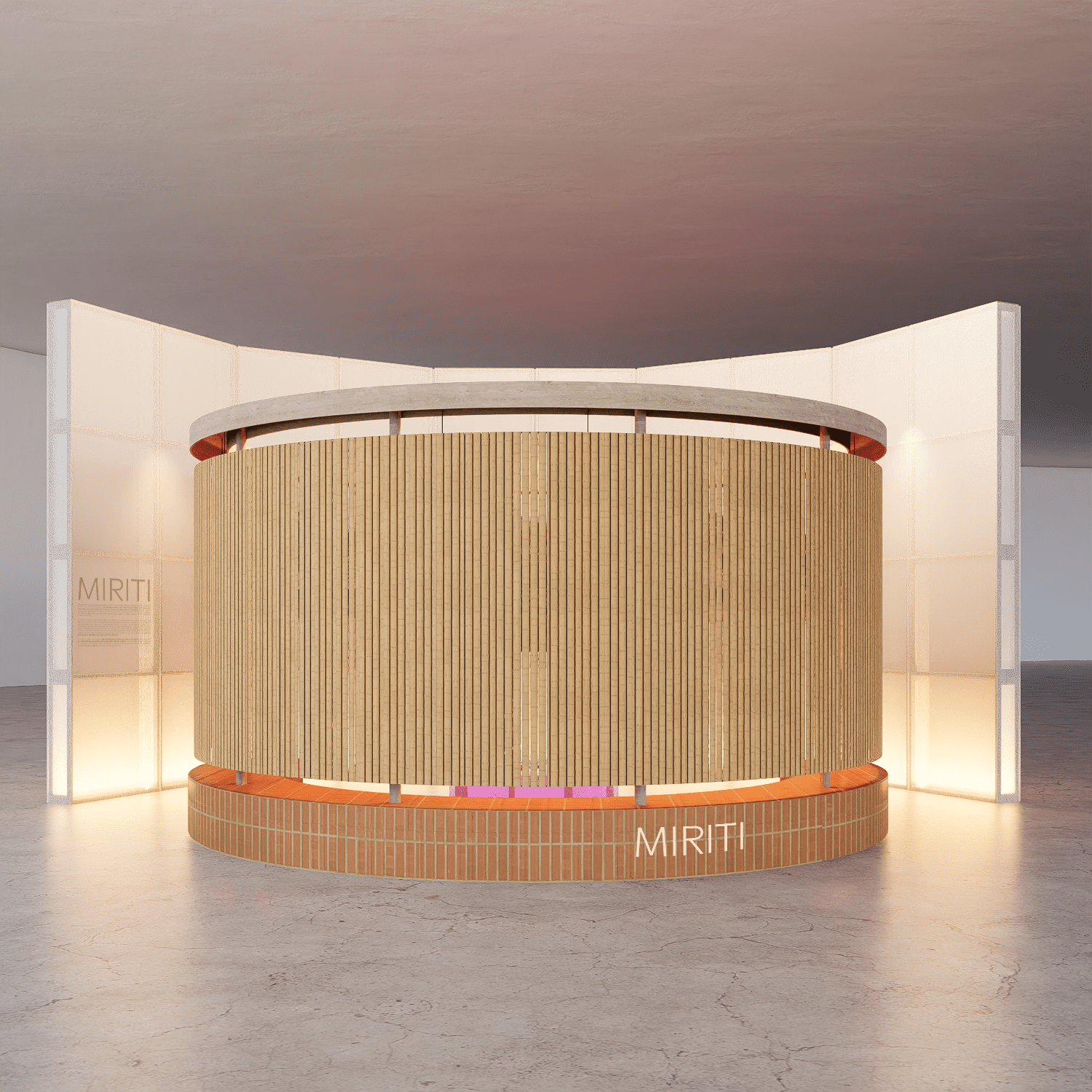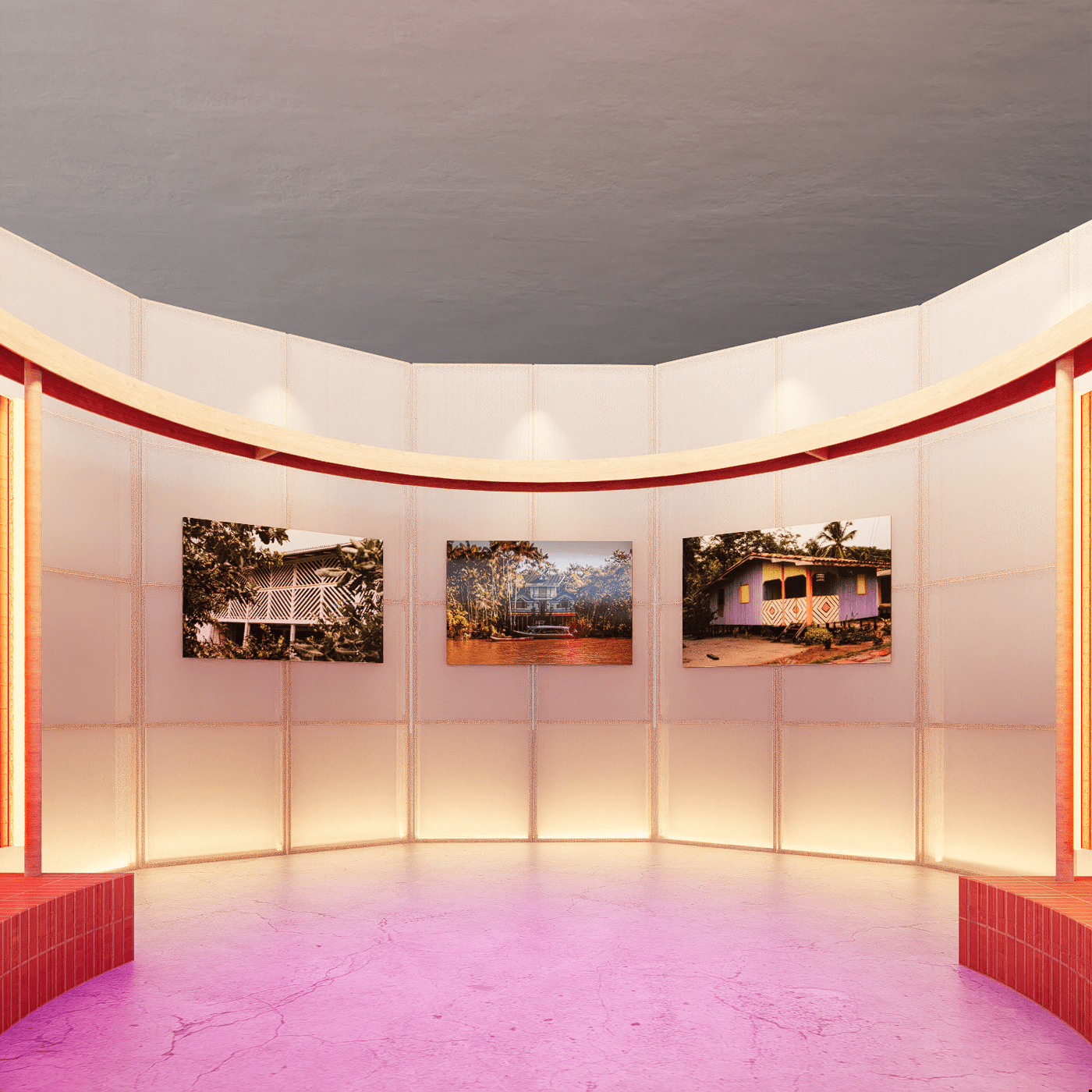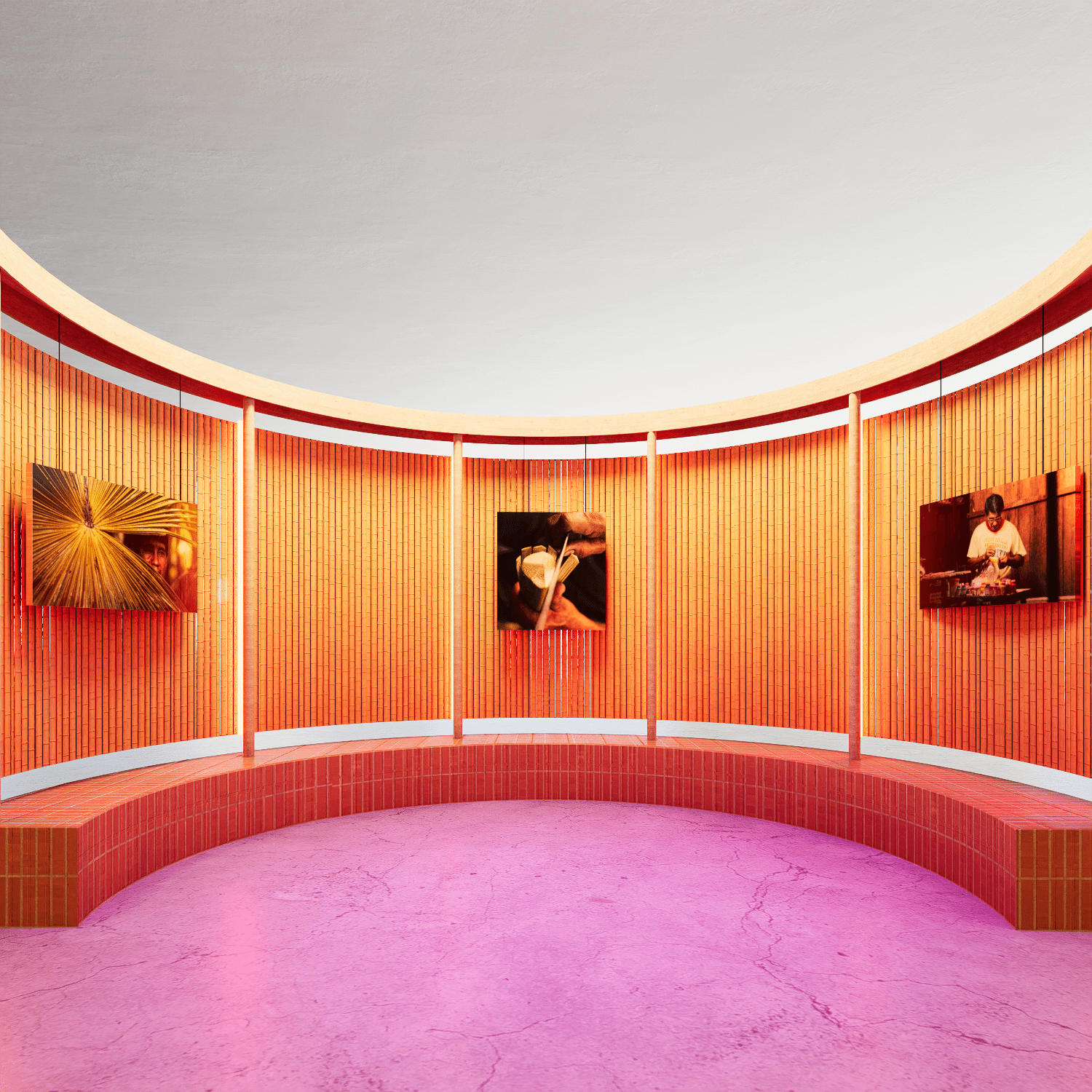Project implementation: Brazil
Project development: Brazil
The miriti pavilion, designed by the Pará-based architecture firm Guá Arquitetura, in partnership with Joel Cordeiro's Atelier Miriti Sustentabilidade, presents miriti as a social technology and avant-garde material. Originating from the Amazonian palm tree Mauritia flexuosa, miriti has been a part of the culture of Abaetetuba for generations, where miriti crafts sustain families and mobilize a symbolic repertoire. Here, this ancestral knowledge meets contemporary engineering and reveals a material capable of reshaping, through this knowledge, the vocabulary of 21st-century architecture.
Lightness is both an argument and a proof. Research indicates that the petiole of the miriti tree is about six times lighter than ordinary wood, without sacrificing strength and durability. Its performance, when properly processed, surpasses that of ordinary MDF. This balance between weight and strength organizes the construction system and defines spatiality, making miriti a promising new sustainable and renewable material.
For this project, miriti is presented in three different forms, showcasing its versatility and creating an innovative construction experience. In the structure, the miriti "MDF Cross Laminated Board," developed with master Joel Cordeiro (Miriti Sustainability), demonstrates the robustness of the glued laminate; cross-layers stabilize the material and distribute stress, converting lightness into rigidity. Along the perimeter, splint curtains display the raw miriti, without structural processing, creating light and ventilation filters that vibrate with the air, demonstrating its lightness and ethereal character. In the background, translucent walls made by artisan Nazaré Alvino from handmade miriti paper, developed through the arts, like miriti washi, reveal the fiber's versatility and comprehensive use of the material; even the processing dust is returned as an input for the composite.
Another important fact is that the management is regenerative. The raw material comes from the stems of the oldest leaves; the palm tree is not cut down. Careful, timely pruning stimulates sprouting and maintains the production cycle, while the design prioritizes disassembly, lightweight transport, and reassembly, extending the lifespan of the components. Thus, sustainability ceases to be an adjective and becomes a method.
There's also an ongoing economic and cultural project. Since 2022, Guá has been researching, alongside artisans from Abaetetuba, ways to expand the application of miriti in architecture and design, increasing the perceived value of this material, maximizing income, and generating visibility and recognition for Abaetetuba's artisans. The curatorial platform, which has yielded awards, supports this experiment and points to a redistributive value chain, in which authorship is shared and the forest remains standing.
Upon entering the pavilion, visitors notice layers, the hand-crafted gestures, the engineering of the slats, the porosity that invites the wind, the light that passes through the fibers and illuminates the volumes. The light and ventilated complex affirms that innovation arises from the intersection of traditional knowledge and architectural reasoning. If the 21st century demands low-carbon and meaningful materials, miriti, light, renewable, and rooted, presents itself as the material of the future.
This pavilion is its manifesto, a trial of an architecture that learns from the forest and restores value, care and permanence.




